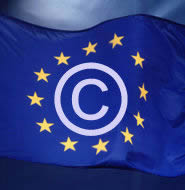Patinnova identifies European patent problems - could Denmark solve them?
The conference conclusions of the Patinnova 2001 event held in Cardiff from 15 to 17 October point to the perennial problem of effective patenting being largely out of the reach for European SMEs (small and medium sized enterprises). Translation, litigation and agent costs all mean that it is an expensive business for SMEs to apply for patents and even costlier to defend them. But a report compiled by the Danish Ministry of trade and industry puts forward a new proposal on how to address the situation. Publicly subsidised legal expense insurance would, according to the report, give SMEs the financial cushion enabling them to defend patents. Too many of those who infringe patents do so knowing that the patent owner will not have the means to defend it. Not only would this scheme help the SMEs to defend the results of their research and development (R&D), it would also encourage more SMEs to carry out R&D. Many SMEs are currently shying away from significant investment in R&D, aware that there is little chance of defending the patents on their results effectively if they are breached. The report suggests that public subsidising of legal expense costs be a temporary measure, working on the pump priming principle that the public sector could help fund until a critical mass of insurers ready to take on the work and a framework for how it will be executed is decided. Once the measure has been successful, there is a need to look at the international dimension of patents. As the report points out, 'patents held by Danes in Denmark are only a small portion of the total patent portfolio held by Danes.' Ensuring that mutual recognition of patents takes place would be a key element of the programme's international success. 'Such a legal expense insurance programme increases the value of patents [and] benefits the economy via two channels,' says the paper. 'Firstly, there is the direct channel. An increase in the value of the patent systems corresponds to a greater implicit subsidy to R&D efforts of the firms taking out the patents, and those efforts thus increase. Secondly, there is the indirect channel. The increased R&D efforts mean more patents which increase the spread of knowledge in the economy.' According to a source at the Danish Ministry of trade and industry, the Danish Presidency in the second half of 2002 could be used as a launch pad for progress on this programme. He also confirmed that Denmark is sounding out the other Member States to see if there is support for the idea and added that he hoped a compromise would not be rushed through before the Danish Presidency began. Work on the plan has been going on for several years, and the Danes feel that, once details of how the subsidies will take place and to what per cent, the plan will be a perfect means of addressing the ongoing issue of how to provide effective patent protection for SMEs in Europe. The conclusions of the Patinnova conference also highlighted that even finding out that a patent has been infringed is difficult for SMEs. This is particularly relevant, the conclusions stated, as the majority of world spending is on services based on information, rather than manufacturing, based on tangible products. Following on from this it was decided that 'the Commission will look into possible ways to offer support not only for starting up or spinning out innovative enterprises, but also to help them survive in a competitive market place.' But by the same token, the conclusions emphasised that the baton must pass to the Member States in driving progress forward. 'We already have unrestricted movement of people, goods, capital and services, but we need now to put the free market for ideas high up on the agenda of each government so that we may get a reasonable consensus on the Community patent. The Commission has already done its share of work -Member States now need to find a reasonable compromise.'
Kraje
Denmark



